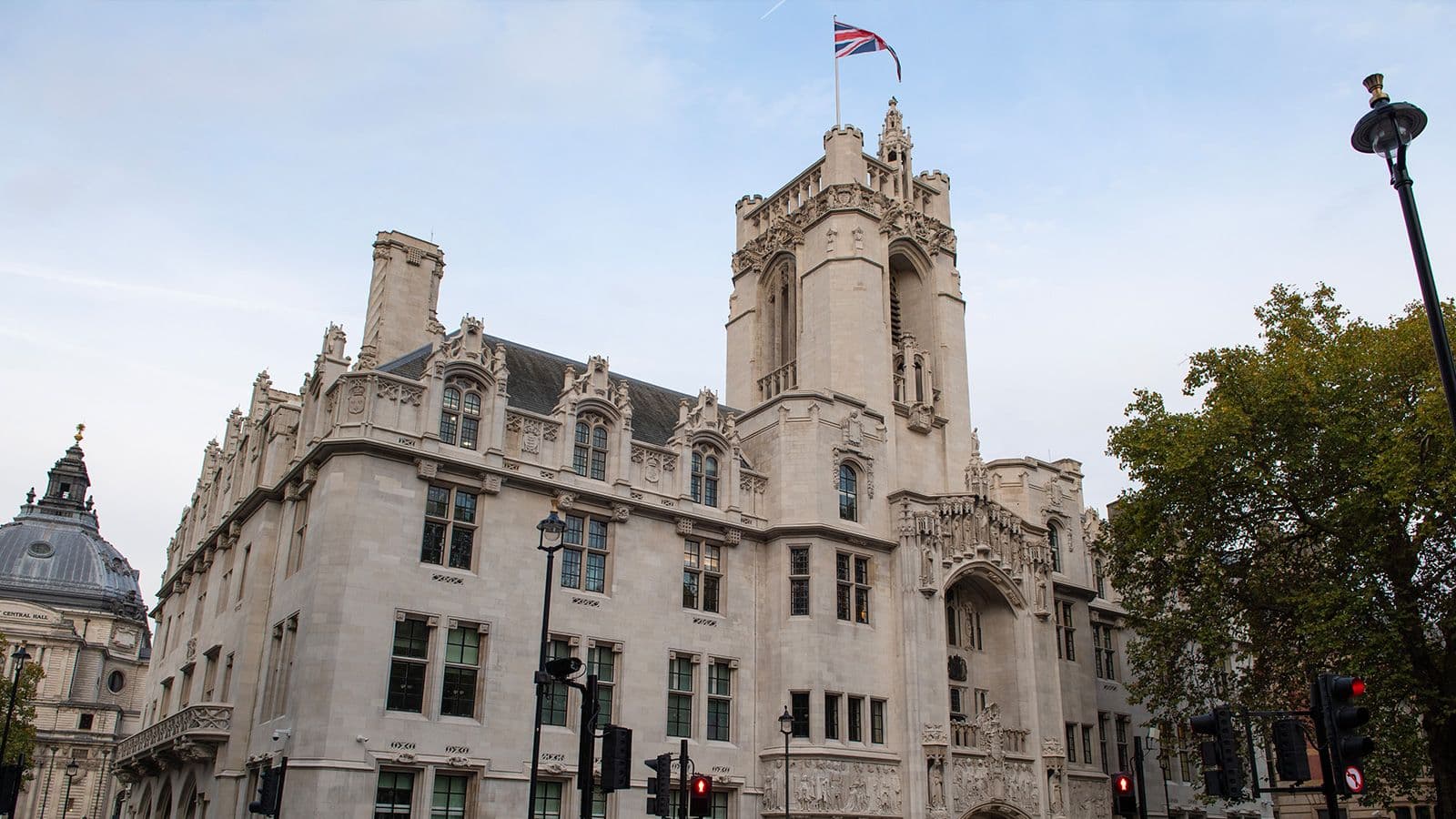From Magna Carta to Lady Jane Grey: the UK Supreme Court's fascinating friezes
By Liam Fox, Information Officer

The Middlesex Guildhall, the building which has been home to the UK Supreme Court (UKSC) and the Judicial Committee of the Privy Council (JCPC) since 2009, is filled to the brim with history and ornate architecture.
The current site has been home to a number of different buildings serving different purposes (including previously being occupied by a tavern known as the Three Tunns, following Henry VIII’s dissolution of the monasteries in the 1530s).
The current building was the third guildhall to occupy the site and also served as Middlesex Crown Court before becoming the Supreme Court’s home in 2009. Interestingly, the Guildhall also housed a number of foreign courts and military tribunals belonging to governments-in-exile which were based in London during the Second World War (a section of the exhibition highlights this period of the building’s history).
With such a rich and varied history, it can be easy to overlook or to forget the detailed architecture and sculptures found throughout the building. In particular, the three ornate friezes which stand above the entrance to the Court (which staff, Counsel, and hundreds of students and visitors walk under every day) can often be missed.
The architect behind the Middlesex Guildhall, James Gibson, entrusted the design and creation of these friezes to Henry Charles Fehr and Carlo Domenico Magnoni. Fehr had previously designed architecture for West Riding (of Yorkshire) County Council (opened in 1898) and Cardiff City Hall (opened in 1906). Fehr drew upon both the Gothic revivalist tradition and the Arts and Craft movement in his designs. Magnoni is an equally interesting character; he was an Italian sculptor and anarchist who was on the run from Italian intelligence agencies. Both worked together in designing the Guildhall.

The frieze on the left-hand side when facing the entrance to the Middlesex Guildhall, depicts King John receiving the Magna Carta from the barons at Runnymede in 1215. This was an event of significant importance in English legal and constitutional history, and this depiction places the law at the forefront of the architecture of Guildhall. This connection to English (and later British) legal history has been meaningful to the Middlesex Guildhall (which housed two courtrooms forming the country sessions), Middlesex Crown Court, and finally the UK Supreme Court.

The central frieze, immediately above the entrance, depicts Henry III granting a charter to the Court’s neighbour, Westminster Abbey. The Abbey saw considerable rebuilding and extension under Henry III’s reign. In the centre of this frieze is a carving of the Middlesex coat of arms above a depiction of the Great Hall of Hampton Court Palace, a former royal palace in south-west London with great walks along the nearby River Thames. This frieze emphasises the building’s connection to the history of Middlesex and also its proximity to Westminster, and in particular Westminster Abbey. The site of the UK Supreme Court was once the site of the Sanctuary Tower and Old Belfry, both of which belonged to the Abbey.

The final frieze (on the right-hand side) is perhaps the most interesting. This frieze pictures Lady Jane Grey being offered the Crown of England by John Dudley, the Duke of Northumberland in 1553. This event took place in Syon House, which fell within the borders of Middlesex. Lady Jane Grey was Queen of England for just nine days in July 1553 between the reigns of Edward VI and Mary I. A unique episode in English history, partially caused by Edward VI’s ministers seeking to find a monarch willing to defend the reformed Church of England. Supporters of Mary mobilised quickly following Lady Jane Grey’s accession, and Grey’s supporters dissolved in the face of Mary’s forces.
Lady Jane Grey would feature prominently in martyrological and literary accounts of English history, and in paintings, but seldom in sculptures (such as the one found at the UK Supreme Court). This frieze depicts a particularly unique episode in English history.

These friezes above the entrance to the UK Supreme Court can be easy to miss, but they are detailed and thoughtful sculptures which highlight the breadth of history witnessed by the site and the building which is now our organisation’s home. Why not come and view them yourself, and then walk inside our beautiful building to see our courtrooms, permanent exhibition and café.

